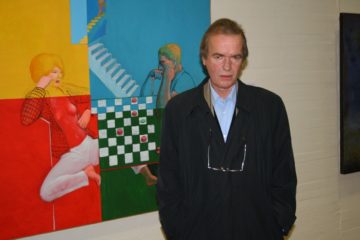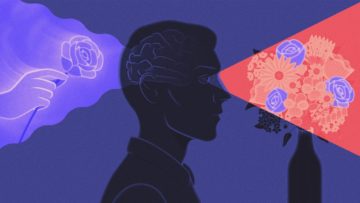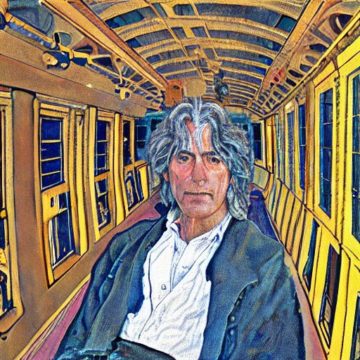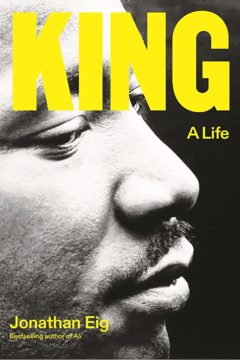John Rodden at Commonweal:
 The key to Philip’s personal appeal was his humor. As a boy, his favorite reading had been a famous joke book by a fellow Florentine, Arlotto Mainardi. As a man, Philip was quite a jester—and very jolly as well as a little zany. Writing about Philip in his Italian Journey, Goethe dubbed him “the humorous saint.”
The key to Philip’s personal appeal was his humor. As a boy, his favorite reading had been a famous joke book by a fellow Florentine, Arlotto Mainardi. As a man, Philip was quite a jester—and very jolly as well as a little zany. Writing about Philip in his Italian Journey, Goethe dubbed him “the humorous saint.”
But it wasn’t just that Philip liked a good joke. He radiated joy, a kind of elevated bonhomie. In Mystic in Motley: The Life of Saint Philip Neri, Theodore Maynard reports that Philip would burst suddenly into song at Mass. Fearing he might swoon at the altar with ecstatic fervor, he would direct his altar boys to read aloud his favorite jokes from Mainardi’s book, to bring him back down to earth so that he could concentrate on the ritual tasks at hand. But even this wasn’t always enough to calm him for long. We are told that, as he read the Passion during Holy Week, Philip would play with his keys and spin a sundial placed near the altar in order to help him keep his composure.
more here.

 Germany Year Zero is the closest that Italian Neorealism came to reckoning with the psychic life of children. Made at the same time, Fireworks meditates on the generative possibilities of psychic and sexual shattering. In so many ways, Fireworks anticipates the explosion of the queer underground cinema that blossomed in the United States in the ’60s and in which Anger’s later film Scorpio Rising (1963) played a central role. Yet Fireworks is also a product of its own “queer time and place.”
Germany Year Zero is the closest that Italian Neorealism came to reckoning with the psychic life of children. Made at the same time, Fireworks meditates on the generative possibilities of psychic and sexual shattering. In so many ways, Fireworks anticipates the explosion of the queer underground cinema that blossomed in the United States in the ’60s and in which Anger’s later film Scorpio Rising (1963) played a central role. Yet Fireworks is also a product of its own “queer time and place.” To be British is a very complicated fate. To be a British novelist can seem a catastrophe. You enter into a miasma of history and class and garbage and publication—the way a sad cow might feel entering the abattoir. Or certainly that was how I felt, twenty years ago, when I entered the abattoir myself. One allegory for this system was the glamour of Martin Amis. Everyone had an opinion on Amis, and the strangeness was that this opinion was never just on the prose, on the novels and the stories and the essays. It was also an opinion on his opinions: the party gossip and the newspaper theories, the Oxford education and the afternoon tennis.
To be British is a very complicated fate. To be a British novelist can seem a catastrophe. You enter into a miasma of history and class and garbage and publication—the way a sad cow might feel entering the abattoir. Or certainly that was how I felt, twenty years ago, when I entered the abattoir myself. One allegory for this system was the glamour of Martin Amis. Everyone had an opinion on Amis, and the strangeness was that this opinion was never just on the prose, on the novels and the stories and the essays. It was also an opinion on his opinions: the party gossip and the newspaper theories, the Oxford education and the afternoon tennis. Memories are shadows of the past but also flashlights for the future. Our recollections guide us through the world, tune our attention and shape what we learn later in life. Human and animal studies have shown that memories can alter our perceptions of future events and the attention we give them. “We know that past experience changes stuff,” said
Memories are shadows of the past but also flashlights for the future. Our recollections guide us through the world, tune our attention and shape what we learn later in life. Human and animal studies have shown that memories can alter our perceptions of future events and the attention we give them. “We know that past experience changes stuff,” said  I’m bored; you’re bored; we’re all bored. By our books and movies and television shows, the endless blandness of the Netflix queue, by our music and theater and art. Culture now is strenuously cautious, nervously polite, earnestly worthy, ploddingly obvious, and above all, dismally predictable. It never dares to stray beyond the four corners of the already known. Robert Hughes spoke of the shock of the new, his phrase for modernism in the arts. Now there’s nothing that is shocking, and nothing that is new: irresponsible, dangerous; singular, original; the child of one weird, interesting brain. Decent we have, sometimes even good: well-made, professional, passing the time. But wild, indelible, commanding us without appeal to change our lives? I don’t think we even remember what that feels like.
I’m bored; you’re bored; we’re all bored. By our books and movies and television shows, the endless blandness of the Netflix queue, by our music and theater and art. Culture now is strenuously cautious, nervously polite, earnestly worthy, ploddingly obvious, and above all, dismally predictable. It never dares to stray beyond the four corners of the already known. Robert Hughes spoke of the shock of the new, his phrase for modernism in the arts. Now there’s nothing that is shocking, and nothing that is new: irresponsible, dangerous; singular, original; the child of one weird, interesting brain. Decent we have, sometimes even good: well-made, professional, passing the time. But wild, indelible, commanding us without appeal to change our lives? I don’t think we even remember what that feels like. Viruses are possibly even more maligned than bacteria, spoken of exclusively in terms of disease. Here, virologist Marilyn J. Roossinck ranges far beyond human pathogens to convince you how narrow that picture is. She instead reveals them as enigmatic entities that are intimately entwined with the entirety of Earth’s biosphere, exploiting and enabling it in equal measure. Backed by numerous infographics, the book alternates between chapters on basic principles of virology and brief portraits of noteworthy viruses. The result is an entry-level introduction to virology that fascinated me more than I expected.
Viruses are possibly even more maligned than bacteria, spoken of exclusively in terms of disease. Here, virologist Marilyn J. Roossinck ranges far beyond human pathogens to convince you how narrow that picture is. She instead reveals them as enigmatic entities that are intimately entwined with the entirety of Earth’s biosphere, exploiting and enabling it in equal measure. Backed by numerous infographics, the book alternates between chapters on basic principles of virology and brief portraits of noteworthy viruses. The result is an entry-level introduction to virology that fascinated me more than I expected. “This is not a scenic drive,” said James Willcox, of adventure travel specialist
“This is not a scenic drive,” said James Willcox, of adventure travel specialist  At the press conference following the Cannes premiere of Martin Scorsese’s Killers of the Flower Moon, someone asked Robert De Niro about his character, a kingpin of a sort with a tricky psyche. “It’s the banality of evil,” he said, describing the character’s moral ambiguity. “It’s the thing we have to watch out for. We see it today, of course. We all know who I’m going to talk about, but I’m not going to say his name.” (
At the press conference following the Cannes premiere of Martin Scorsese’s Killers of the Flower Moon, someone asked Robert De Niro about his character, a kingpin of a sort with a tricky psyche. “It’s the banality of evil,” he said, describing the character’s moral ambiguity. “It’s the thing we have to watch out for. We see it today, of course. We all know who I’m going to talk about, but I’m not going to say his name.” (
 Stephen Mulhall in the London Review of Books:
Stephen Mulhall in the London Review of Books: A Boston Review Forum, with a lead piece by Christine Sypnowich:
A Boston Review Forum, with a lead piece by Christine Sypnowich: Twice, quarterback Patrick Mahomes has led the Kansas City Chiefs to victory in the Super Bowl, the pinnacle of U.S. football. Although most fans have their eyes on the ball as Mahomes prepares to throw, his tongue does something just as interesting. Just as basketball star Michael Jordan did as he went up for a dunk, and dart players often do as they take aim for a bull’s-eye, Mahomes prepares to pass by sticking out his tongue. That may be more than a silly quirk, some scientists say. Those tongue protrusions may improve the accuracy of his hand movements.
Twice, quarterback Patrick Mahomes has led the Kansas City Chiefs to victory in the Super Bowl, the pinnacle of U.S. football. Although most fans have their eyes on the ball as Mahomes prepares to throw, his tongue does something just as interesting. Just as basketball star Michael Jordan did as he went up for a dunk, and dart players often do as they take aim for a bull’s-eye, Mahomes prepares to pass by sticking out his tongue. That may be more than a silly quirk, some scientists say. Those tongue protrusions may improve the accuracy of his hand movements. Ah, the magical season of prizes is once again upon us. Each spring brings, along with warm rains and budding flowers, Fulbrights, Rhodeses, Pulitzers and Guggenheims, as well as Oscars, Tonys and Indies — which are thought of so fondly they come with their own nicknames. Everybody, it seems, loves honors and prizes. And they certainly make for great entertainment. The award ceremonies for literary prizes are usually demure, decorous little things, but award shows on TV are like a country music hoedown. And the Oscars rank so high in the culture that actors measure their worth by rehearsing their acceptance speeches.
Ah, the magical season of prizes is once again upon us. Each spring brings, along with warm rains and budding flowers, Fulbrights, Rhodeses, Pulitzers and Guggenheims, as well as Oscars, Tonys and Indies — which are thought of so fondly they come with their own nicknames. Everybody, it seems, loves honors and prizes. And they certainly make for great entertainment. The award ceremonies for literary prizes are usually demure, decorous little things, but award shows on TV are like a country music hoedown. And the Oscars rank so high in the culture that actors measure their worth by rehearsing their acceptance speeches. W
W The great French writer Colette once speculated that “certain highly complex human beings” are marked by their “mental hermaphroditism.” The fabled essayist Susan Sontag was among them. She was a woman, but she dressed in the glamorously genderless garb of an intellectual celebrity and wrote on the weighty topics usually reserved for her male peers. In her journals, she mused that “to be an intellectual is to be attached to the inherent value of plurality.”
The great French writer Colette once speculated that “certain highly complex human beings” are marked by their “mental hermaphroditism.” The fabled essayist Susan Sontag was among them. She was a woman, but she dressed in the glamorously genderless garb of an intellectual celebrity and wrote on the weighty topics usually reserved for her male peers. In her journals, she mused that “to be an intellectual is to be attached to the inherent value of plurality.”